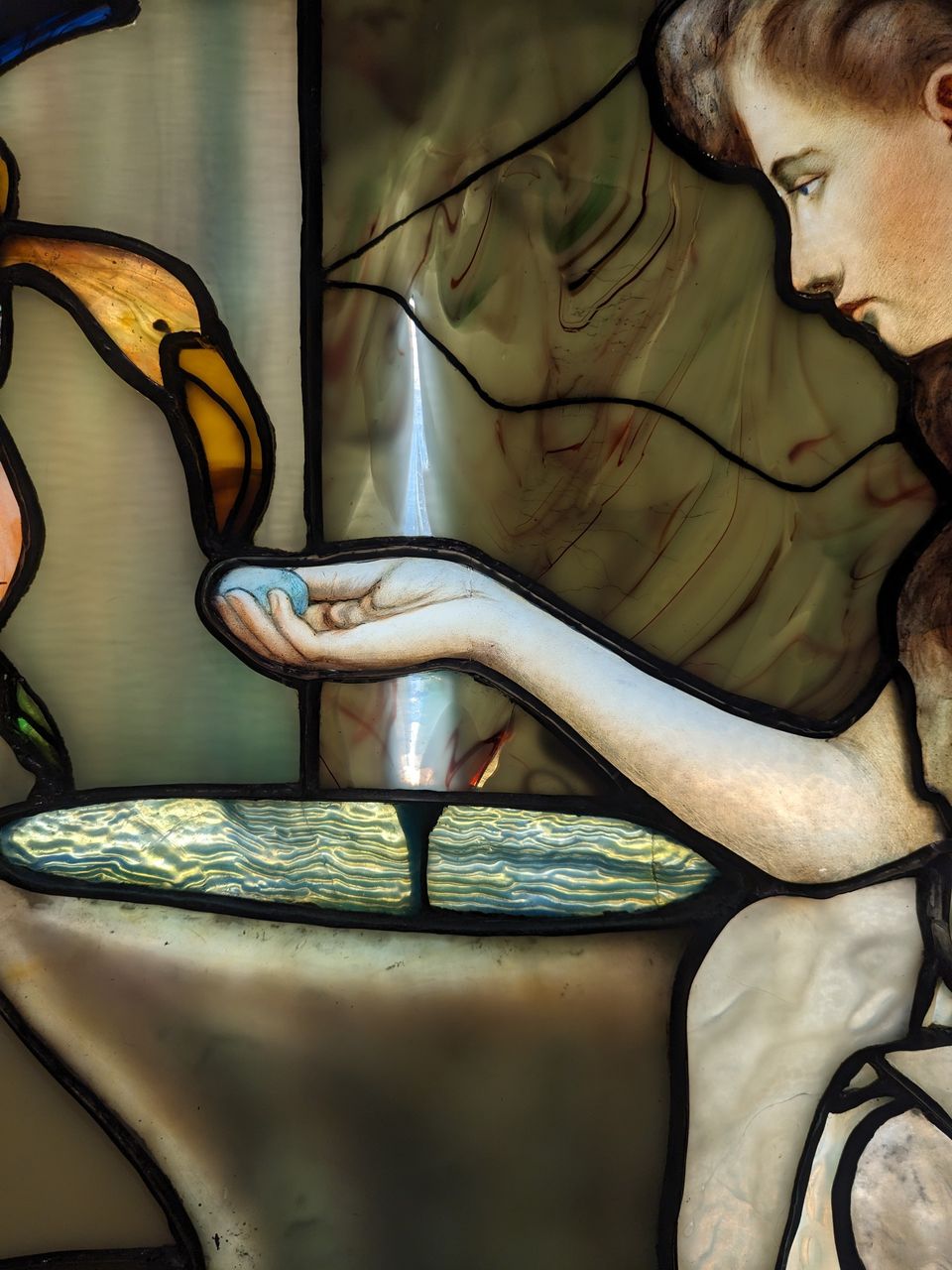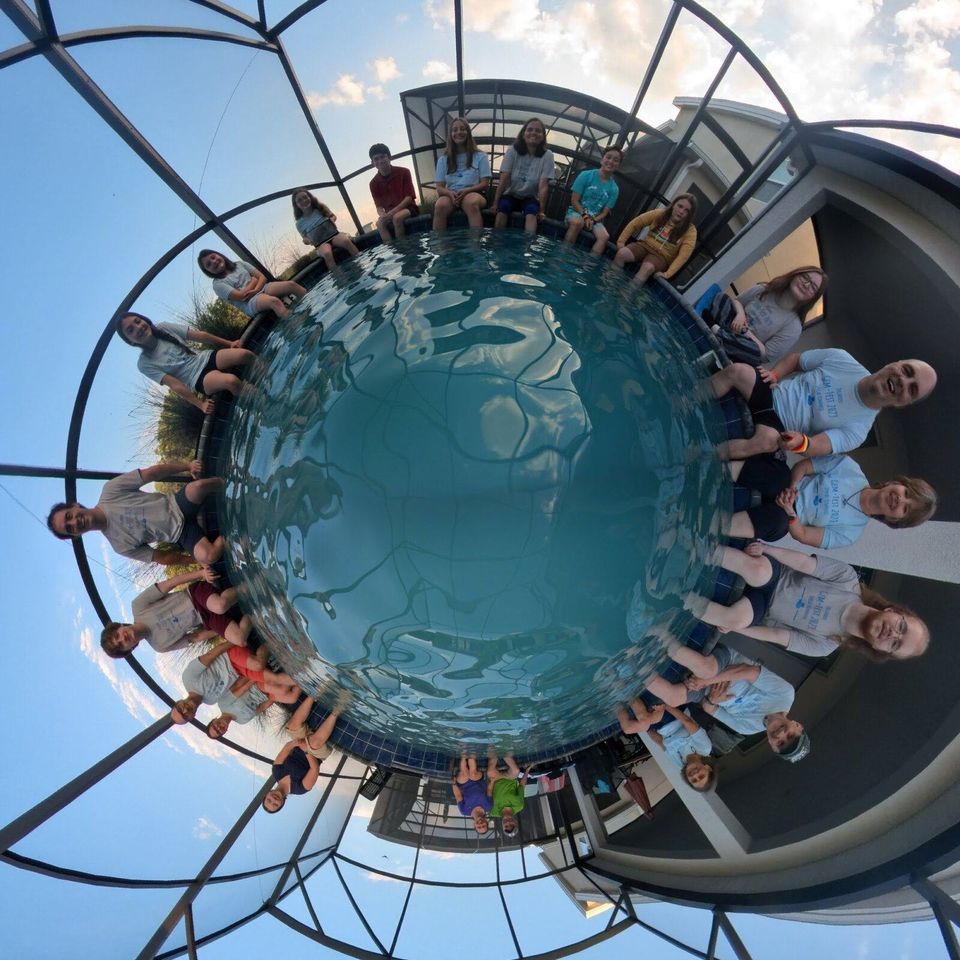Holiday Thoughts
Received this through one of my lists, and read it with interest due to my recent “We have too much STUFF!” diabtribe. There are some interesting points.
The Issue of Toys, Children, and Materialism
By Marsha Johnson, December 2004
Shopping bags and baskets full, parents and family friends arriving with parcels, long store lines, and big dollar prices………birthdays, holidays, other occasions both secular and religious, family rooms, play rooms, bedrooms, living rooms, filled with play items, bright colors, plastics, woods, cloth, books, and more…………is there room for the child? Where is the child? In late fall, these questions start to present themselves to even the most unconscious person as we strive to find the `perfect’ addition to an entire house filled with personal items…….as well as strive to come up with a wish list for ourselves. This year, I notice the most advertised item is a S’more cooker! If only we could just package the happy feelings that we experience when gathered around a cozy campfire, in the woods, while toasting food on a stick! This is what the manufacturer knows will sell his silly little invention: he is selling memories.
Burdened with possessions from before birth, we stumble along this treacherous pathway at holidays, driven by commercial interests, lists of best sellers (if other people bought it, it must be good), and short lived desires stimulated by visual, auditory, and olfactory images. Artistic and historical pictures of holidays always include the scene where wrappings are torn off and cries of joy fill the room as each receives exactly the right gift. Does this sound familiar to you?
I distinctly recall a holiday when our oldest son was two years old, and in his stocking, he discovered a tiny metal truck and a tiny yellow metal bulldozer. At that point, his holiday was complete and he was not interested in any other gaily wrapped packages or presents except one large cardboard box left over from some item that he played with for weeks. Did this wake us up a bit? Well, frankly, not enough. Our family cultural background, our own perceptions of the `ideal’ holiday scene, and an inability to resist commercial pressures and peer pressures, drove us on the mad buying road for quite a few years to come.
We tread this delicate path each moment, and it seems that their influence increases geometrically at major holiday times. We smother our children under a plethora of physical goods! It is no wonder that we cannot breathe freely under the weight of our possessions.
Reading through a stack of books on child development, from ones generated out of Waldorf education to just about every other approach, there is indeed a common theme. Children should be surrounded by a few multi-purpose, open-ended items that encourage imaginative play, social interaction, and healthy bodily movement. Young children need to be interactive with the physical world in a direct sense, stomach or back to the earth, although a blanket, skin, or floor may lie between. The urge to rise must be allowed to flourish independently in the infant human being, and nearly all children do indeed push themselves away from the horizontal and ascend to a vertical stance. The miracles of scooting, crawling, standing, cruising, and walking need no artificial assisters such as walkers, jumpers, or swings.
Nearly all of the most popular toy items do not meet the 3 basic criteria listed above: hard plastic items are too formed to be open-ended, they must adhere to their pre-conceived shape and form. They feel dead to the touch and are non responsive to the mood of the child. You can see this disdain in the actions of the children who play with plastic items as they throw them around rooms, kick them, leave them outside in the yard, litter them everywhere and have trouble cleaning them up. Parents literally have garbage can sized containers into which all these plastic goodies are shoveled and rarely sorted. Landfills are overwhelmed with plastic debris and it requires thousands of years to decompose. Plastic also use valuable petroleum resources and is filled with toxins for the most part. Does this discourage us? I wonder. Stroll without your child down a toy store items and simply look for plastic. It is unavoidable.
Open ended items are simple, often made of natural materials such as wool, wood, metal, or cloth. Undefined or lightly defined toys allow children to use them in a multitude of ways. A new playmate brings new ideas for logs, scarves, blocks, and playhouses. Endless games with ropes, sticks, and simple tools will result during afternoons with friends. Finding toys that work with social settings as well as all-alone times is a key factor for parents. Creating and combining personal play areas of family play areas is important and requires some consideration. Clearly, adults need space for adult activities and babies need to be protected from dangerous items. It might be helpful to sit down and think over your home, your room assignments, notice where your family gathers, do children actually play in the bedroom? Or do they bring all their play items into the kitchen, the living room, or family room, where the parents tend to be?
Social interactions can begin for children at about age 3 or 4, when they can start to actually `play with’ another child instead of `play near’ someone else. The child in the 3rd year begins to use the word “I” to designate self, and this is a critical consciousness step in development. When we use the word “I”, we experience an inner feeling of our free selves, our free will, our own being, our souls and spirits. We are unique and can express this wonderful word that only we can use for ourselves (no-one else can call us I). Before this time, parents notice that children are exploring their surroundings with interest, imitating the actions of their parents or caregivers, perhaps using the broom to sweep the floor. Babies under 1 year are observers and listeners as they move their limbs and learn to manipulate their small physical bodies in that all encompassing drive to rise. Their social encounters are based on human interactions, facial expressions, and echoing or mimicking what they see. Have you ever been about a baby about 9 months old who literally stares at your face until you make eye contact? Serious hopeful expression transforms into a beautiful body-wide smile! What a wonderful feeling!
Body movement is critical to healthy brain development and according to every study in the world, video and computer activities are contributing to an unprecedented decline in child physical heath. Running, skipping, dancing, moving, climbing, chasing, and hopping are on the decline! Teachers see children in the grades who have great challenges with basic balance skills such as walking a straight line. What to do? Parents are often exhausted in their own work, and insert the video into the machine to escape into solitude for 90 minutes while the child is occupied. Our families are often so isolated from one another that there is no respite or very little. I know a child who is 18 months old who can turn on tv and video player, insert and remove the movie, and operate the remote control.
Relatives of families who are trying to find a different path often fall into a situation where they create conflict with gifts of commercial plastic or media items. The common culture is such that refusing such gifts often induces arguments and antipathy. Children of these families are sometimes then over-exposed to these influences during visits or vacations, when grandparents can follow their own beliefs and stuff children with nitrite laced hot dogs and movies. Has this happened to you? It can be a very difficult emotional experience for the adult children of baby boomer generation grandparents, born in the 40s and 50s, which was also the birth of the plastic toy industry. I recall wishing for the Mr. Potato Head Toy that came with nose, ears, mouth, etc. that were to be pushing into a real potato. The innocent (?) beginnings of a world wide lifelong addition to the acquisition of things that have very little significant purpose or meaning. And most of us do not even realize that we have been registered in this senseless buying club for life.
Families who are seeking a different way of providing toy items and play spaces for their children must be willing to undergo some conflicted feelings and pressures. In addition, parents must be able to agree to adopting a new approach and support one another: it is not uncommon to find one parent wishing to be dedicated to a less materialistic lifestyle while the other one is sneaking the Gameboy into the stocking.
PLAY ITEMS CHECKLIST AND ADVICE:
If you are not a parent yet, good, you can skip the rest of the this paragraph and go on to the section for specific recommendations for children by ages. If you have children already, then you must make some tough decisions. Here is one method that works well and it gentle in its approach. If you follow this advice, you will find that in about 1 year, your home will be free of all commercial/materialistic toy burdens, you will feel lighter and more in tune with nature and the seasons, and your family time will be enhanced and enjoyable with the need to spend hours organizing and cleaning up after your children and yourself.
First, have a private discussion with spouse and come to agreement. This is critical and this program will not work unless this has been completed. Then examine your home and its contents. Go into your child’s room and count how many items are in that space. Include clothing, shoes, and coats. Count aloud and be amazed. How can one being be surrounded by so many physical things? Notice how many images or hanging items are on the walls, how many things hang in windows, etc. Do the same activity with your play room or family room where toys are kept. Look into the movie cupboard and notice how many boxes or cases. Count how many TVs are in your home. How many music CDs? Where are these items kept? Peek into the attic, the basement, the garage, the kitchen cupboards, the laundry room, the sheet storage, the towel closet, obtain a good impression of how many items there in your home.
Take a break and have a cup of tea. In a day or two, send the children over to play at a friend’s home. Strengthen yourself with prayer and go into your play spaces and remove about one third of the toys not on the list below. Put into large black storage bags and drive over to someone else’s home or garage. (No temptation to retrieve and after 3 months, you can given them to charity). Include books, posters, stuff, even expensive stuff. This first foray is the hardest and you can select items that you know your child rarely plays with. Try to include mostly plastic junky items that will never be missed. Include stuffed animals that are sitting, lonely, and plastic dolls that lie heaped in the corner. Sentimental items like grandma’s doll clothes should be kept, there is love in the stitches that cannot be replaced.
If you are really strong and on a roll, you can do this for other areas of the home and include the clothing drawers: children do NOT need walk-in closets, this accumulation of 24 pairs of shoes is both confusing and ridiculous and I am old enough to remember when children under 3 wore white baby shoes (1 pair) which we polished. Do your kitchen (who need 4 tablespoon measurers?) and your own closet. Donate your items to charities and store if you must.
If children notice something is gone, if under six, distract them with a play idea, or tell a little story about a bunny who had so many things she couldn’t sleep in her cozy bunny hole. Leave it at that if possible. Children six and older may need to know that the family is making some changes that are healthy for everyone and that is probably enough. If you try this on older children, you will need their cooperation.
In about three months, do this again. In the meantime, begin adding to the store of items listed below. Slowly replace various toys with substitutes that meet the three criteria of being open-ended, socially healthy, and encourage body movement. If you continue this pathway for a year, that will give your four opportunities to reduce, diminish, refocus, alter, redefine, and re-direct your child’s play environment, sleep environment, and living environment.
In your organization, create specific areas of particular play items: outdoors for certain pursuits, an art space with paints, crayons, brushes, pastels, paper, and more, a reading/book area to share, and a game playing space. These spaces can share your dining room or family room. Bedrooms are for sleeping and keeping clothing in, maybe 1 special stuffed animal friend, or 1 doll cradle. When a child is sent to clean their room, it means change the sheets, sweep the floor, wash the window, and take care of shoes and clothing. How many times do we confuse cleaning with picking up?
MUST DO:
1) Remove all TVs from home if possible with young children and middle aged children and teenagers. You will not regret this decision.
2) If not possible, keep one and put in closet that locks or some space inaccessible to family members without a lot of work.
3) Obviously same with all video equipment….dvd players
4) Remove all computer games from computer and put cds in a box and hide them in a closet. Computers are for `working’, writing, communicating. If you play games, do it only after kids are in bed.
5) Ask or persuade friends and family to switch from giving more toys and clothes to a) buying items you request, b) gift certificates to particular catalogs (Magic Cabin, Chinaberry Books), or c) put the money they would have spent into certificates of deposit for future educational expense (tuition is a big issue for the future) or d) be willing to substitute time together for physical items. Come over for dinner and stay for a games night, go out for a walk in a bird reserve, take a trip to the beach, cook a family recipe together……beg, plead, and insist. They will adopt your methods, slowly.
6) If child receives an unexpected objectionable item, be gracious and enjoy it for a while, then `disappear’ it magically. Time is a great healer.
7) Frequently visit other families who are like minded to encourage yourself and find support. You will find that all the children in the neighborhood will want to hang out at your house! Bring them in and teach their parents.
8) Take the money you save and enjoy a fantastic family camping trip or vacation. You will literally save thousands and thousands of dollars over the 18 years of your child’s life.
9) Examine wardrobes and put together fourteen outfits for your children, enough for 2 weeks without laundry, for each season, and donate the rest. Buy good quality wool, cotton, and natural fiber clothes that will last through several children, practice the fine art of hand me downs, and gather a group of other families to have a twice a year `share’ time where you all bring extra clothes and parcel them out. You will be shocked at how this is so very freeing although you will spend a bit more time doing laundry on your new schedule.
10) Begin a rhythm in your household that includes all members in a reasonable cycle of chores that includes and shares out cooking, cleaning, washing, and gardening. Spend your time together with purpose as opposed to trying to get a few chores `done’ while everyone else sits in front of a screen. Laundry day can be a good social time to visit over sock matching, laundry line hanging, and there is nothing that can beat (Sorry commercial artificial laundry scent manufacturers) the smell of wind-dried sheets on summer days. Avoid using machines for your household work, study up on how to make your own healthy cleaners, and treasure old towels for wonderfully soft rags. Step away from silly products that promise to somehow make your life easier that actually are simply substitutes for old fashioned, tried and true methods.
11) Get together with a couple other families and form a study group to enjoy dinner together once a month and talk about parenting, read new books, enjoy community, and share ideas. Insist that gift giving occasions be primarily social events, outdoor adventures, nature immersed, and intentionally diminish or reduce the time of `gifting’ in your life. Try an `exchange’ habit, instead, or take a class and learn how to make something useful, for example, learn to carve wooden spoons and give these as gifts. Simple and very helpful and useful. Do not overdo it and give dozens! Avoid the consumption addiction in all respects.
PLAY ITEMS FOR PARTICULAR AGES LIST:
INFANTS UNDER 1 YEAR: (Secret! Children under 1 year old do not need ANY toys! None at all. They need humans and something to suck and chew on, like their fingers and toes. But if you must….)
Wooden chew toy/rattle (1)
Soft ball (size of an adult fist)
2-3 silks to play peek a boo
1 soft cottony type stuffed thing to chew on, can be animal or shape
A special snuggly blanket for bed time
A nature table to observe
1YEAR TO 3 YEARS OLD:
The above items plus……..
A set of wooden blocks (can be made by hand, or tree limbs that are smooth and splinter free, cut into rounds and sanded)
1 soft doll, no features, stuffed with wool, with doll cradle and blanket
Several soft balls
Baskets of smooth sticks, shells, nuts in the shell, stones
Stacking toys (there are wooden ones that are nice)
Small truck or car
Basket of silks, six or eight, in large squares for playing and dress up
3 stick crayons in red, yellow, blue and some sturdy paper for coloring
6 small board books, classics
1 nice picture on the wall
1 nice hanging hand made mobile
4 YEARS TO 7 YEARS
Same as above
Plus dress up capes and crowns
Stick horse is nice, jump rope
Play areas for pretend kitchen, pretend laundry area
Digging tools for the garden, seeds
Board games (2-3 at one time)
Crayons in eight colors
Water color paints in 3 colors (red, yellow, blue)
Beeswax for modeling, sewing kit with big needle
Playstands for creating homes, forts, pirate ships
Simply music instruments are nice: rattles, bells
Outdoor riding toys are enjoyed
Wagons, swings, ropes, small logs outside
1 doll with legs and arms, clothes for the doll
Small animals for playing, wooden shapes are nice
Often a small playhouse with furniture, all wood
Or a barn with horses, stalls, fences, etc. of wood
No more than 2 dozen books on shelf for a few months
Candle next to bed for lighting and night time song and story
8 YEARS TO AGE 12
Cards, dice
Board games for the age: checkers, chess, cribbage
Collectables (big age for starting collections)
Kits for building, tool sets that are real tools
Wood carving with supervision
Sewing kits
Knitting kits, wool, crochet sets and patterns
More paints, include pastels, chalk
Blackboard is nice for wall with chalk
Sport equipment as your family enjoys
Bike
Treasure box for rock collection
Often a more complex doll
Roller Skates, or blades
Bird watching kits, books
Excursions: Take them places!
Books on a shelf, family books, carefully selected for content
Binoculars, telescope, microscope
Magnifying glasses
Items that your child really desires and will take care of………
This is a only a partial list and I am sure more can be added as you think of your family and their needs. As time passes, the children will become more independent and the parental guidance loosens quite a bit. If we can help our children perceive that we can escape from the commercial/material treadmill that keeps so many sad captive people enslaved to both earning the money to purchase items and time sacrificed to maintain them, we are doing a good deed for the world and the future. I welcome your responses.
Marsha Johnson
__._,_.___




